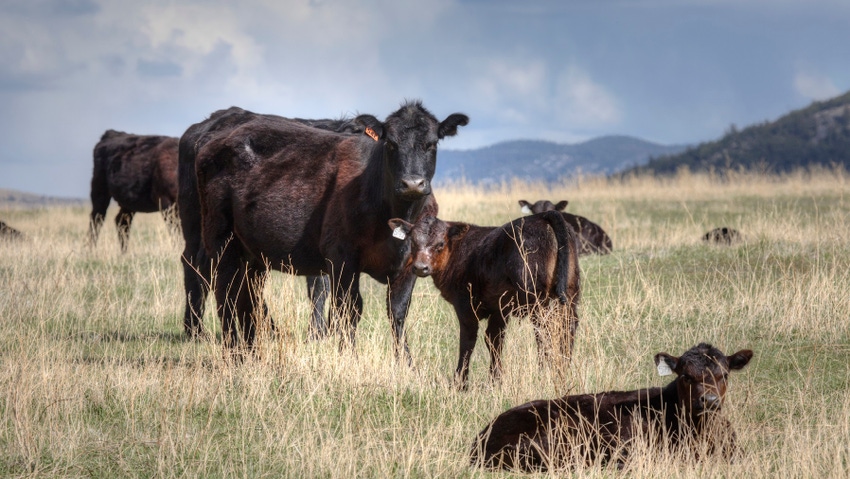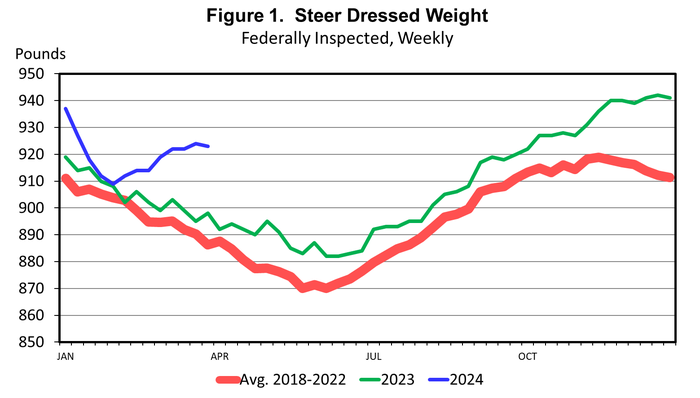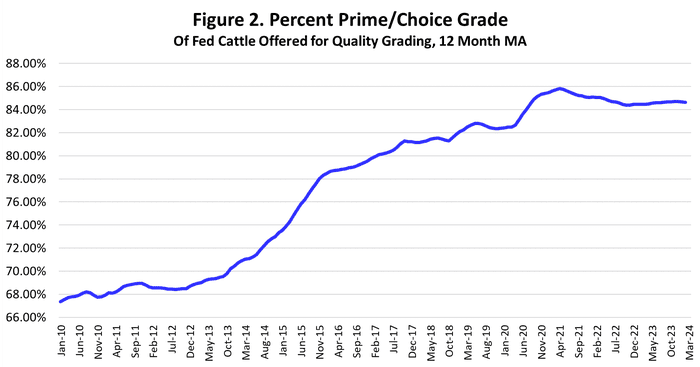
Fed steer carcass weights decreased from 937 to 909 pounds the first five weeks of 2024, the result of winter weather in December and January. Since the beginning of February, steer carcass weights increased counter-seasonally to 924 pounds before declining by one pound in the most recent weekly data (Figure 1). The current steer carcass weight is 25 pounds heavier than one year earlier. Carcass weights may decrease seasonally in the next few weeks but are expected to remain higher year over year for the remainder of the year. Heifer carcasses show a similar pattern and are currently 19 pounds heavier than one year ago.

Fed carcass weights are impacted both by long term trends and current market conditions. Carcass weights have trended heavier for over 60 years with steer carcass weights increasing by an average of 4.0 pounds per year, up over 240 pounds from 660 pounds in the 1960s to over 900 pounds in recent years. Heifer carcass weights have increased by an average of 4.5 pounds per year over the same period.
Carcass weights are further boosted at the current time by decreasing cattle numbers, which increases incentives to feed cattle longer as they try to maintain feedlot inventories. Decreasing corn prices adds additional incentive to feed cattle longer. Kansas feedlot data shows that steers are currently averaging 190 days on feed, up 9 days from one year ago and about 40 days longer than a decade ago. Increasing carcass weights are the result of more days on feed combined with changing cattle genetics and use of feeding technology, such as implants, ionophores and beta agonists.
One of the outcomes attributable to longer feeding periods is an increase in quality grading. Figure 2 shows the general increase in the percentage of Prime and Choice cattle over the past 15 years, from about 68 percent in 2010 to current levels near 85 percent. The average Choice and higher percentage has been steady the past four years.

However, longer feeding periods also result in a decrease in yield grading. Figure 3 shows that the percentage of yield grade 4 and 5 cattle has generally increased over the past 15 years, from less than nine percent to an average of nearly 20 percent currently. The average increase in yield grade 4 and 5 cattle has been especially pronounced in the last year. Thus far in 2024, the Y4/5 percentage has averaged 23.7 percent.

Increased Prime/Choice percentage and increased Y4/5 percentage are 66 percent correlated, meaning that they tend to move together. However, the increase in Y4/5 percentage in the past year has not been associated with an increase in the Prime/Choice percentage of feedlot cattle. Feedlots will continue to have incentives to push cattle weights, aided and abetted by packers who are also seeking additional pounds of beef as cattle numbers continue to tighten. Steer and heifer carcass weights will likely average heavier in 2024.
About the Author(s)
You May Also Like




